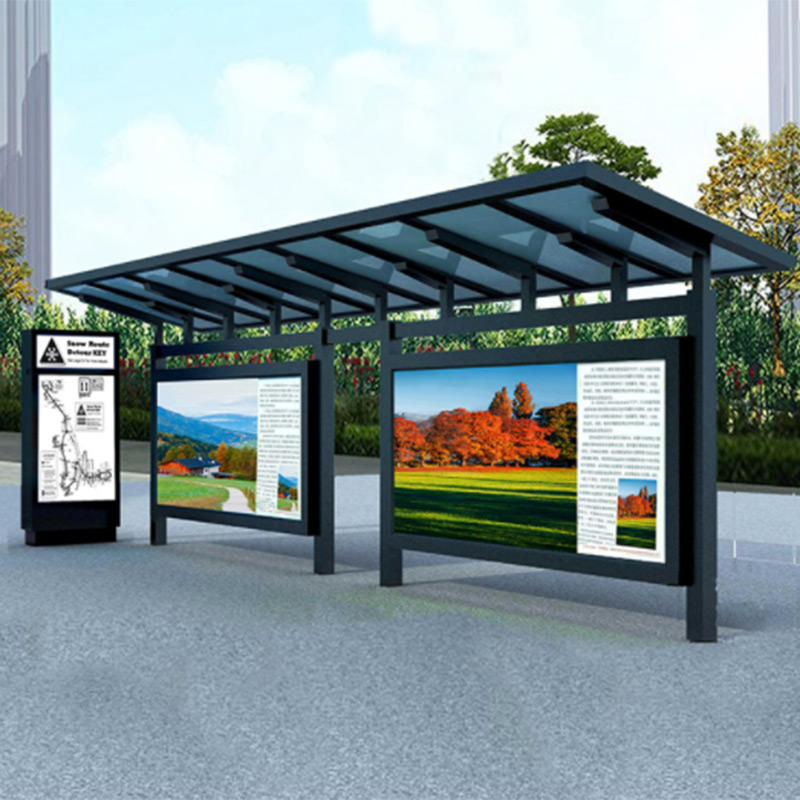- English
- Español
- Português
- русский
- Français
- 日本語
- Deutsch
- tiếng Việt
- Italiano
- Nederlands
- ภาษาไทย
- Polski
- 한국어
- Svenska
- magyar
- Malay
- বাংলা ভাষার
- Dansk
- Suomi
- हिन्दी
- Pilipino
- Türkçe
- Gaeilge
- العربية
- Indonesia
- Norsk
- تمل
- český
- ελληνικά
- український
- Javanese
- فارسی
- தமிழ்
- తెలుగు
- नेपाली
- Burmese
- български
- ລາວ
- Latine
- Қазақша
- Euskal
- Azərbaycan
- Slovenský jazyk
- Македонски
- Lietuvos
- Eesti Keel
- Română
- Slovenski
- मराठी
- Srpski језик
What Are the Benefits of Having a Bus Shelter?
2024-09-20

What are the benefits of having a Bus Shelter?
Having a Bus Shelter provides several benefits to people waiting for public transportation. Firstly, as mentioned earlier, it protects from harsh weather conditions such as scorching heat or rain. This can be a vital factor for the elderly or people with disabilities who may be especially sensitive to weather changes. Moreover, having a Bus Shelter in place can significantly improve the overall experience of waiting for transportation. For instance, comfort is vastly improved as people can have a seat and relax while waiting. In addition to this, Bus Shelters can also serve as an advertising medium, thus providing a visually appealing atmosphere for people waiting.
What are the environmental benefits of having a Bus Shelter?
Having Bus Shelters as a part of the transportation system also offers environmental benefits. By providing a comfortable waiting space for public transportation, Bus Shelters can help reduce the usage of personal vehicles, which, in turn, means less pollution and congestion on roads. It can also encourage more use of public transportation, which, in turn, will mean fewer emissions and overall pollution.
What is the significance of Bus Shelter design?
Design plays a significant role in the functionality of a Bus Shelter. A well-designed Bus Shelter can offer additional features, such as lighting, charging stations, Wi-Fi hotspots, and several other amenities. These additional features can make the waiting time more productive and enjoyable and attract more people to use public transportation.
How does Bus Shelter promote public transportation?
Bus Shelters can promote public transportation by offering a comfortable, safe, and convenient experience to the waiting public. A well-designed Bus Shelter can also act as an advertising medium, which can attract more people towards utilizing public transportation. Additionally, having a Bus Shelter in place can improve the overall look of the community and provide a sense of unity in the city's transportation system.
Conclusion
As we have seen, Bus Shelters are an important component of public transportation systems globally, providing various benefits to the waiting public. In addition to providing shade and shelter from harsh weather conditions, Bus Shelters can also offer numerous environmental benefits by encouraging the use of public transportation. Furthermore, a comfortable, well-designed Bus Shelter can transform the waiting experience into a productive, safe, and enjoyable one, encouraging more people to use public transportation whenever possible.
With over a decade worth of experience, Ningbo Qixin Technology Co., Ltd is a company that focuses on delivering the best Bus Shelter solutions worldwide. Our expertise in Bus Shelter design has been proven time and again, as we have helped multiple clients in setting up the most comfortable and efficient Bus Shelters. Check our websitehttps://www.nbqixin-tech.com to learn more about our company and services or you can email us at sales@nbqixintech.com
References
1. Rosenberg-Japkowitz, R. (2013). A Shelter Strategy for Transit Stops. ITE Journal, 83(2), 57-61.
2. Parra, D., & Larkin, E. (2017). A Framework for Analyzing the Quality of Bus Transit Service at Bus Stop Locations. Journal of Public Transportation, 20(3), 24-44.
3. Murat, T. , Banai, R. & Gilli, M. (2014). Design and passenger satisfaction of urban bus stops, Journal of Environmental Planning and Management, 57(10), 1506-1521.
4. Li, Q., Zhan, W., Zhao, L., Yue, Y., & Zhang, F. (2018). Evaluating Passenger Satisfaction with Bus Stop Service Quality Using Fuzzy Set Theory. Journal of Advanced Transportation, 2018, 1-11.
5. Allan, A.D. (2016). Shared bus stop for passengers; an evaluation of bus stop sharing, Journal of Traffic and Transportation Engineering (English Edition), 3(2), 159-165.
6. Karatas, O. (2018). The optimal design and location of bus stops in urban areas, International Journal of Transport Economics, 55(4), 583-598.
7. Lin, Y., Li, T., Kanafani, A., & Yang, L. (2016). Real-time Bus Holding Control at Bunching Prone Stops Based on a Predictive Model. Transportation Research Part C: Emerging Technologies, 67, 226-245.
8. Cavallaro, F. L., & Benekohal, R. F. (2014). Modelling Bicycle Activity at Transit Stops Based on Surrounding Land-Use Characteristics. Transportmetrica A: Transport Science, 10(7), 614-640.
9. Speights Jr, L.W., Subramanian, S. , & Khisty, C.J. (2013). Empirical Evaluation of Improved Service Quality at Bus Stops Using a Linked Stop-Specific Data Set. Transportation Research Record, 2345, 33-42.
10. Libo Hao, Meifang Wang, Sida Ye & Xiaoqiang Xue (2018) Influencing factors analysis on passenger satisfaction of the bus stop environment, Transportation Letters, 10:5, 233-240.





